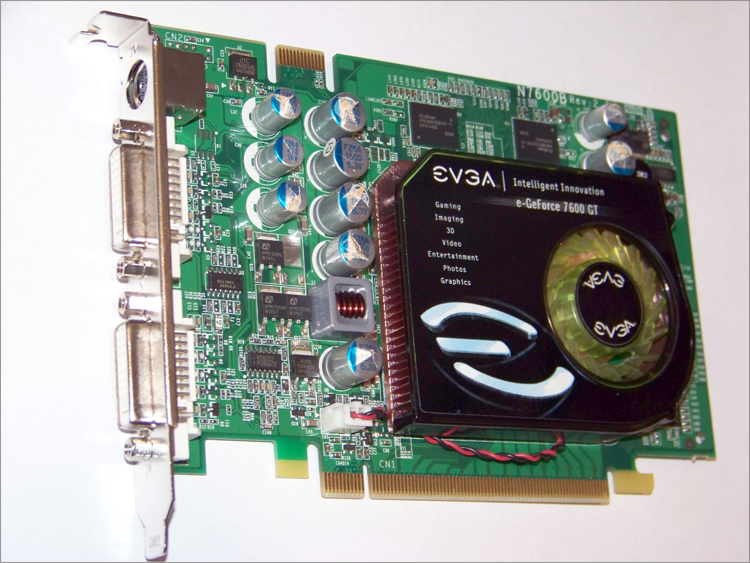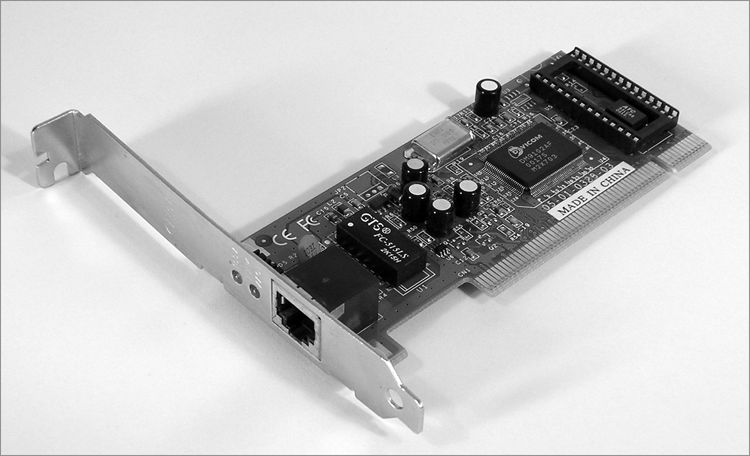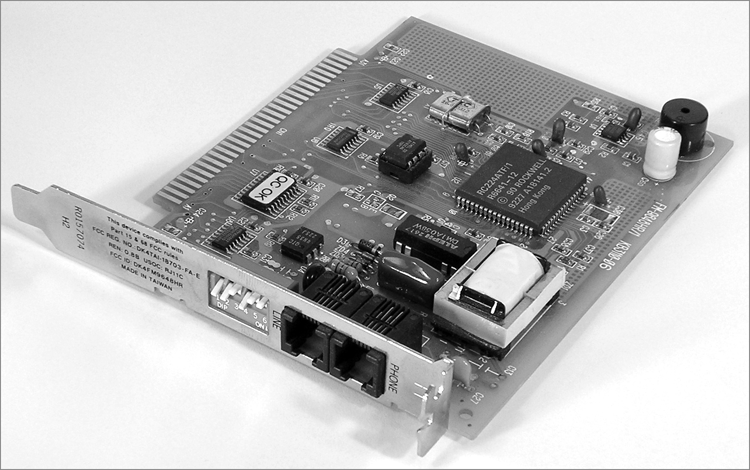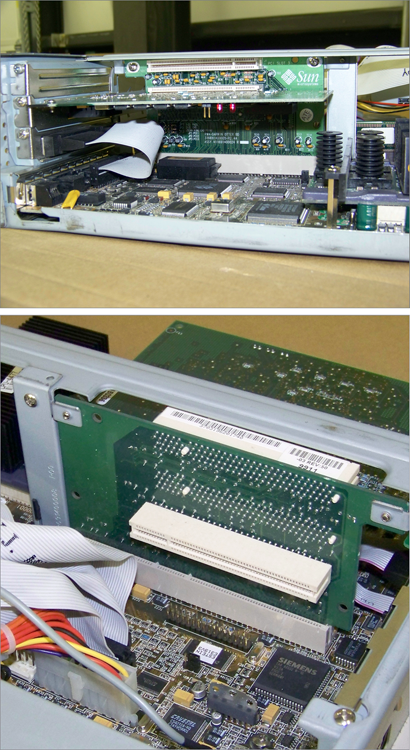Installing and Configuring Expansion Cards
An expansion card (also known as an adapter card) is simply a circuit board you install into a computer to increase the capabilities of that computer. Expansion cards come in varying formats for different uses, but the important thing to note is that no matter what function a card has, the card being installed must match the bus type of the motherboard you are installing it into. For example, you can install a PCI network card into a PCI expansion slot only.
For today’s integrated components (those built into the motherboard), you might not need an adapter to achieve the related services, but you will still need to install drivers to make the integrated devices function with the operating system. As the trend toward more integrated components was maturing, many installers found most of the integrated components to be nonfunctional. A quick check in Device Manager showed a small collection of devices to be without their device drivers. Most motherboard manufacturers supply CD-ROM discs with their motherboards that contain all the device drivers needed to get the built-in electronics recognized by the operating system. Execution of the disc’s setup program generally results in all components working and Device Manager clearing its warnings.
The following are the four most common categories of expansion cards installed today:
- Video
- Multimedia
- I/O
- Communications
Let’s take a quick look at each of these card types, their functions, and what some of them look like.
Video
A video adapter (more commonly called a graphics adapter or even more commonly a video card) is the expansion card you put into a computer to allow the computer to display information on some kind of monitor. A video card is also responsible for converting the data sent to it by the CPU into the pixels, addresses, and other items required for display. Sometimes, video cards can include dedicated chips to perform some of these functions, thus accelerating the speed of display.
At a basic level, video adapters that have a PCI interface operate sufficiently. However, because AGP and PCIe slots offer more resources to the adapter, most manufacturers and computer owners prefer not to use PCI slots for video adapters. Although you might be able to find the rare motherboard that still offers an AGP slot, PCIe is the preferred expansion slot for video card attachment. The technology on which PCIe was designed performs better for video than those on which AGP and PCI are based. Figure 3-1 shows an example of a PCIe-based video card.
Figure 3-1: A video expansion card

Multimedia
The most basic and prolific multimedia adapter is the sound card. TV tuner cards and video capture cards are newer multimedia adapters that continue to gain in popularity due to decreasing cost and the rise of the Internet as a forum for creative sharing.
Sound Card
Just as there are devices to convert computer signals into printouts and video information, there are devices to convert those signals into sound. These devices are known as sound cards. Although sound cards started out as pluggable adapters, this functionality is one of the most common integrated technologies found on motherboards today. A sound card typically has small, round, 1⁄8″ jacks on the back of it for connecting microphones, headphones, and speakers as well as other sound equipment. Many sound cards used to have a DA15 game port, which can be used for either joysticks or MIDI controllers. Figure 3-2 shows an example of a legacy sound card with a DA15 game port.
Figure 3-2: A typical sound card

Sound cards today might come with an RCA jack (see the section “Audio/Video Jacks” later in this chapter). This is decidedly not for composite video. Instead, there is a digital audio specification known as the Sony/Philips Digital Interface (S/PDIF). Not only does this format allow you to transmit audio in digital clarity, but in addition to specifying an RCA jack and coaxial copper cabling, it specifies optical fiber connectors (TOSLINK) and cabling for electrically noisy environments, further increasing transmission quality of the digital signal.
TV Tuner Cards and Video Capture Cards
The TV tuner card is a class of internal and external devices that allows you to connect a broadcast signal, such as home cable television, to your computer and display the output on the computer monitor. TV tuner cards come in analog, digital, and hybrid varieties. Most TV tuner cards act as video capture cards as well. A video capture card can also be a stand-alone device and is often used to save a video stream to the computer for later manipulation or sharing. Video-sharing sites on the Internet make video capture cards quite popular with enterprises and Internet socialites alike. TV tuner cards and video capture cards need and often come with software to aid in the processing of multimedia input.
I/O
I/O card is often used as a catchall phrase for any expansion card that expands the system to interface with devices that offer input to the system, output from the system, or both. Common examples of I/O are the classic serial (RS-232) and parallel (printer) ports and drive interface connections. A popular expansion card of the 1980s and early 1990s was known as the Super I/O card. This one adapter had the circuitry for two standard serial ports, one parallel port, two IDE (PATA) controllers, and one floppy controller. Some versions included other components, such as a game port.
Often, if you want to use a SCSI hard drive in your system or a SCSI-attached printer or scanner, you have to install an expansion card that expands the motherboard’s capabilities to allow the use of SCSI devices. The drives and other devices then cable to the adapter, and the adapter performs the requisite conversion of the drive signals to those that the motherboard and the circuits installed on it could use. Today, many server motherboards have SCSI controllers built in for such internal hard drives, and everything else tends to use integrated USB and FireWire interfaces, although expansion cards for these common interfaces exist as well.
Communications
Communications adapters give a computer the ability to transmit information to other devices that might be too distant to cable up to directly. Network adapters and modems are the two most popular types of communications adapter. Network adapters are generally used within the administrative domain of a home or enterprise and rely on other devices to relay their transmissions around the world. In contrast, modems allow direct domestic or international communication between two devices across the Public Switched Telephone Network (PSTN). Although there are other devices in the PSTN, the service provider’s network appears as a cloud to the end stations, unlike the intermediate devices of a home or enterprise data network.
Network Interface Card (NIC)
A network interface card (NIC) is an expansion card that connects a computer to a network so that it can communicate with other computers on that network. NIC can also stand for network interface controller. It translates the data from the parallel data stream used inside the computer into the serial data stream that makes up the frames used on the network. It has a connector for the type of expansion bus on the motherboard (PCIe, PCI, and so on) as well as a connector for the type of network (such as fiber connectors, RJ-45 for UTP, antenna for wireless, or BNC for legacy coax). In addition to physically installing the NIC, you need to install drivers for the NIC in order for the computer to use the adapter to access the network. Figure 3-3 shows an example of a NIC.
Figure 3-3: A network interface card

Wireless NICs
Wireless NICs have the unique characteristic of requiring that you configure their connecting device before configuring the NIC. Wired NICs can generally create a link and begin operation just by being physically connected out of the box to a hub or switch. The wireless access point or ad hoc partner computer must also be configured before secure communication, at a minimum, can occur by using a wireless NIC. These terms will be explained in greater detail in Chapter 8, “Installing Wireless and SOHO Networks.”
Cellular Cards
Almost every cellular service provider offers a line of adapters that can be installed into or inserted on the outside of desktop and laptop computers. In addition, depending on your service plan, most smartphones can be tethered to your computer and used as a cellular gateway. Very often, the cellular adapter comes with a setup program that configures the card for the service provider’s network. From that point, anytime you are in a cellular service area, you can use the adapter to gain access to the Internet through the provider or by roaming on the network of a partner or competitor with which an agreement has been reached in that area.
Modem
Any computer that connects to the Internet using an analog dial-up connection needs a modem, or modulator/demodulator. A modem is a device that converts digital signals from a computer into analog signals that can be transmitted over phone lines and back again. These expansion card devices have one connector for the expansion bus being used (PCIe, PCI, and so on) and another for connection to the telephone line. Actually, as you can see in Figure 3-4, which shows an old ISA modem, there might be two RJ-11 ports: one for connection to the telephone line and the other for connection to a telephone. This is primarily so that a phone can gain access to the same wall jack that the computer connects to without swapping their cords. Keep in mind, though, that you won’t be able to use the phone while the computer is connected to the Internet.
Figure 3-4: A modem

Riser Cards
An alternative motherboard form factor, known as New Low-Profile Extended (NLX), or one of its offshoots have been used in some types of low-profile cases. NLX places the expansion slots sideways on a special riser card to use the reduced vertical space optimally. Adapter cards that normally plug into expansion slots vertically in other motherboards plug in parallel to the motherboard, so their second most demanding dimension does not affect case height. Figure 3-5 shows a motherboard with its riser card attached.
Figure 3-5: Both sides of a riser card with adapter

Riser technology also serves to free up valuable motherboard space for circuitry that cannot or should not be placed on adapters. Without the use of the riser, the motherboard would need to be made larger to accommodate the same circuitry. The term riser can also be used for any board that combines many functions into a single card, such as AMR and CNR, which were introduced in Chapter 1, “Motherboards, Processors, and Memory,” and don’t actually allow the attachment of additional cards to themselves the way true risers do.
Adapter Configuration
Expansion cards might require configuration. However, most can be recognized automatically by a Plug and Play operating system. In other words, resources are handed out automatically without jumper settings or the installation of device drivers is handled or requested automatically. Your supplying the drivers might be the only form of configuration required. For example, unlike older ISA adapters, PCI adapters take care of requesting their own resources through Plug and Play. This is especially true of simple I/O adapters, such as those that provide USB, FireWire, parallel, and serial ports.
Some modern adapters, however, require more specific configuration steps during installation. For example, two or more PCIe graphics adapters that support SLI (see Chapter 1) must be bridged together with special hardware that comes with the adapters. Although most sound cards tend to work with no specific configuration, advanced features will need to be implemented through the operating system or through utilities that came with the adapter. Wired network adapters tend to be easier to configure than wireless ones. Wireless adapters often require the installation of a screw-on antenna, which should be postponed until after the card is fully inserted and physically secured in the system. Software configuration that allows these cards to communicate with a wireless access point can be challenging for the novice. Nevertheless, even wired NICs might require static configuration of certain protocol settings, such as IP addressing, duplex, and speed, in order for them to be productive. The functions of TV and video capture cards are sometimes not native to the operating system and therefore come with advanced utilities that must be learned and configured before the adapters will work as expected.
In any event, consult the documentation provided with your adapter for additional configuration requirements or options. The more specialized the adapter, the more likely it will come with specialty-configuration utilities.
